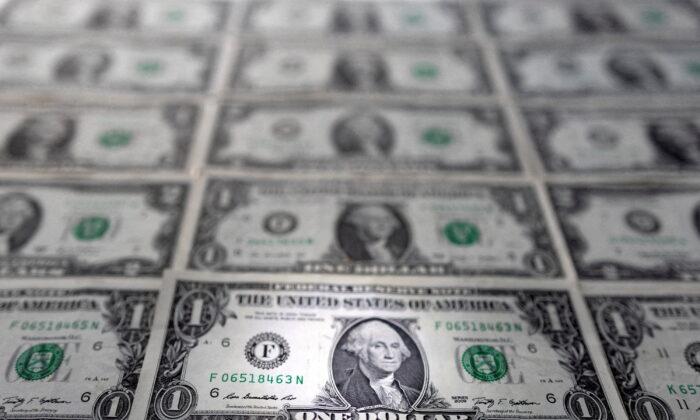LONDON/SINGAPORE—The dollar headed for its longest losing streak in 2–1/2 years on Thursday after the Federal Reserve sounded close to calling time on interest rate hikes, while the Swiss franc edged higher after the central bank pushed ahead with another hike.
The Fed raised its benchmark funds rate by 25 basis points, as expected, but dropped language about “ongoing increases” being needed in favor of “some additional” rises, as it watches how wobbling confidence in banks affects the economy.
Futures imply around a 50 percent chance of one more quarter-point hike, in contrast to Europe where markets see around 50 bps of further tightening.
The gap has sent the euro surging to a seven-week high of $1.0930, having also risen for six straight sessions.
The shift in tone from the Fed makes it less likely that markets go back to worrying that strong economic data drives rates higher, NatWest Markets head of G10 FX strategy Brian Daingerfield said.
“From the foreign exchange perspective, we think that argues for further dollar weakness as the ceiling for the Fed cycle has clearly come down,” he said.
The dollar index, which measures the currency against six major peers, was last down 0.2 percent, on track for its sixth straight daily drop, its longest such streak since September 2021.
The Swiss National Bank raised its policy rate by 50 basis points as the central bank sought to balance tackling inflation with concerns about financial market turmoil, while it reiterated it was willing to be active in the foreign exchange market.
The SNB also said measures announced by authorities at the weekend regarding Credit Suisse had “put a halt to the crisis.”
The franc strengthened after the decision and was last up 0.2 percent against the dollar at 0.9155.
“We’re seeing a stronger franc, not only because of the hike, but also because they effectively said they put a halt to the crisis in the banking sector,” said Kirstine Kundby-Nielsen, FX analyst at Danske Bank.
Sterling also hovered near a seven-week high after data showed a surprise rise in British inflation on Wednesday, leaving it at 10.4 percent and heaping pressure on the Bank of England to raise rates and sound hawkish at its meeting later on.
Markets have priced in a 25-bp hike from the BoE.
The Norwegian crown strengthened against the euro and dollar after the Norges Bank raised its interest rate by 25 bps to 3 percent and said a hike in May was likely.
The Australian and New Zealand dollars rose 0.6 percent and 0.9 percent respectively. Dollar/yen, which closely follows U.S. yields, fell 0.3 percent after earlier hitting a six-week low of 130.41.
Two-year U.S. Treasury yields fell 2 bps, extending a drop of about 20 bps on Wednesday.
Financial markets have been roiled by wavering confidence in banks globally following a run on Silicon Valley Bank two weeks ago and the sudden demise of Credit Suisse.
The focus on the banking front is now primarily on U.S. regional lenders where worry of a contagious run on deposits remains elevated.
Fed Chair Jerome Powell said deposit flows have stabilized in the last week, and smaller lenders said they took some comfort from U.S. Treasury Secretary Janet Yellen’s remarks that deposit insurance would be considered were there to be a contagion risk.
That “took the anxiety out of the room,” according to Daniel Kimbell, an executive at the local Passumpsic Bank in St Johnsbury, Vermont. Regional lenders’ shares, however, fell.





